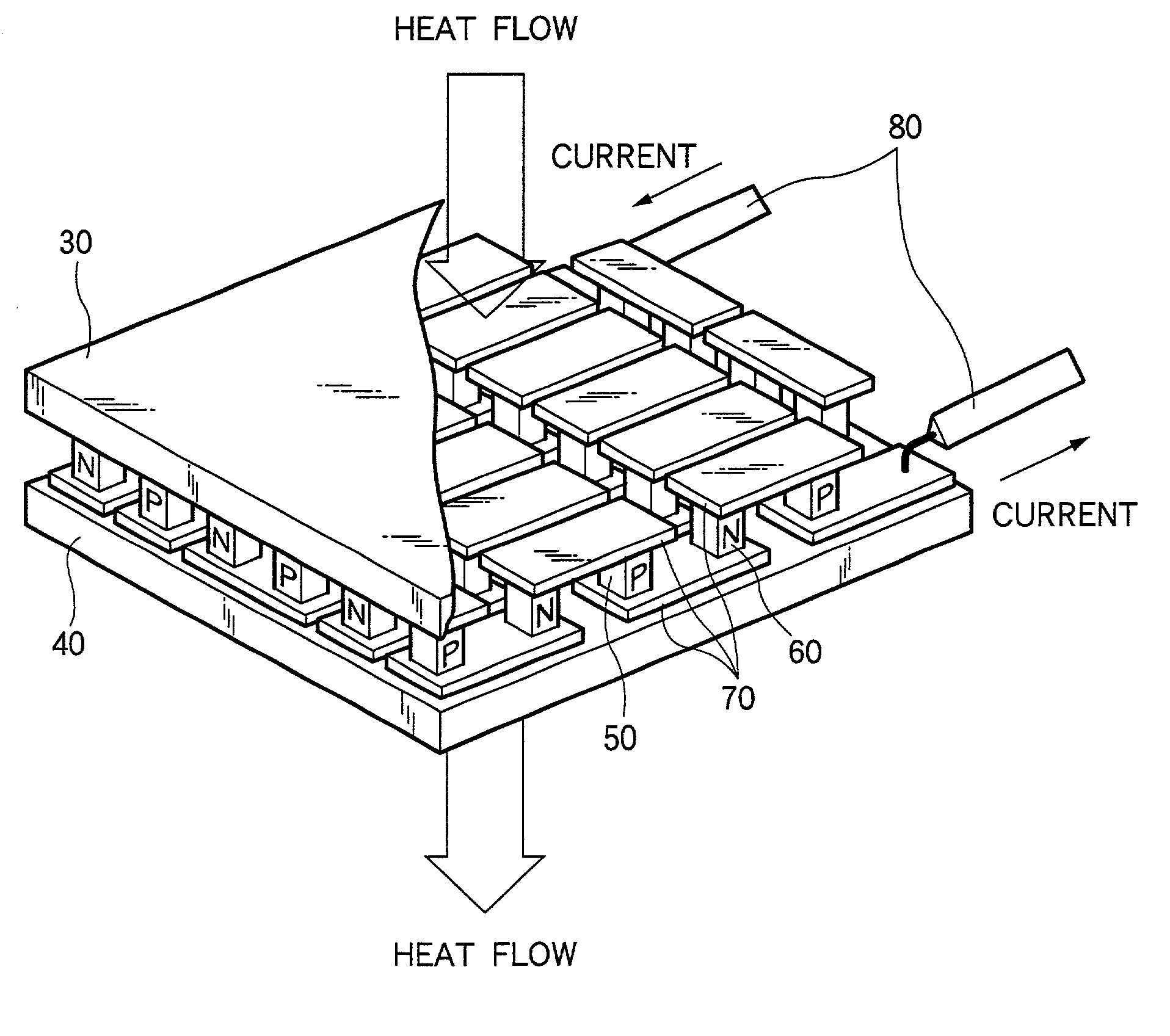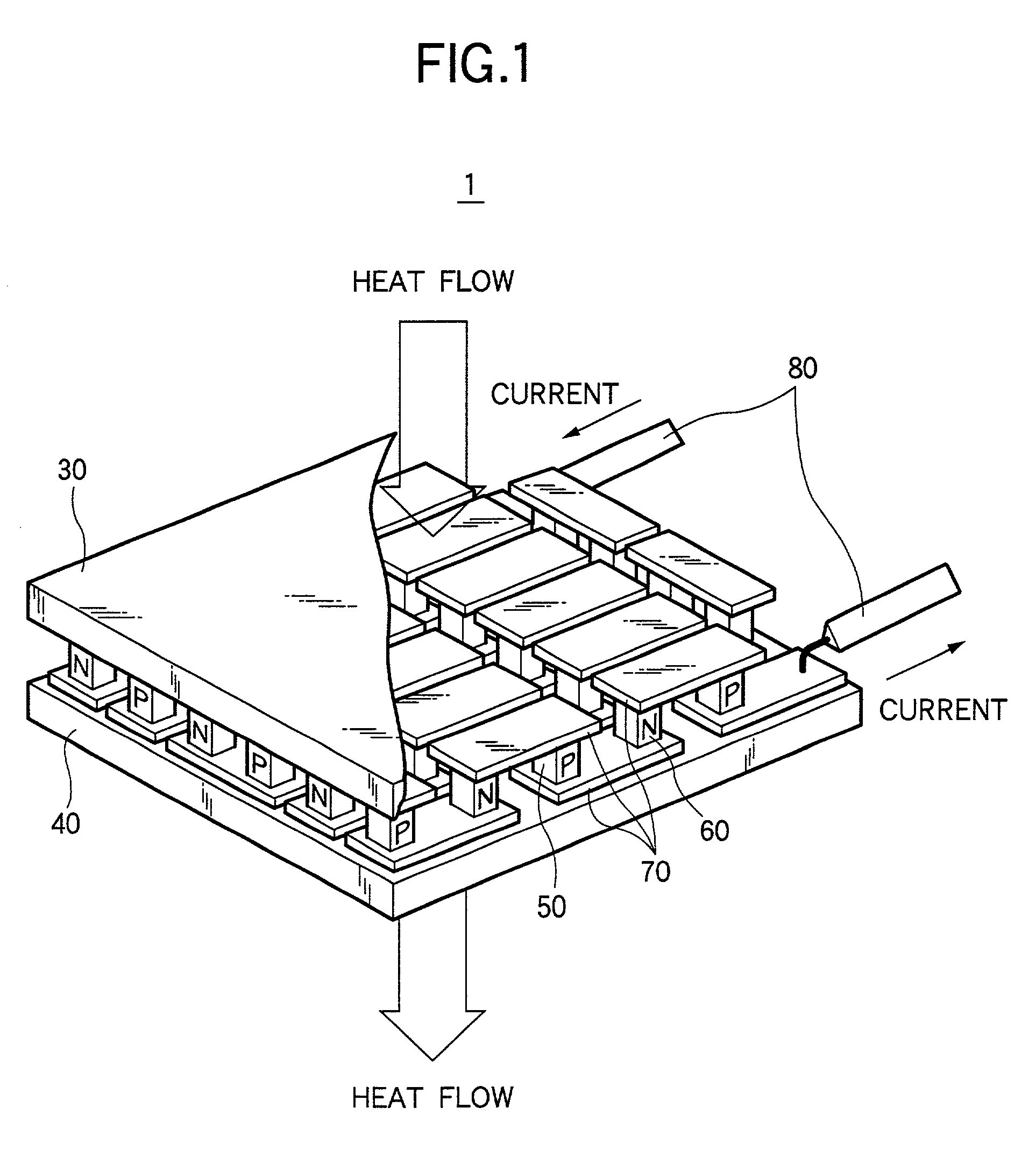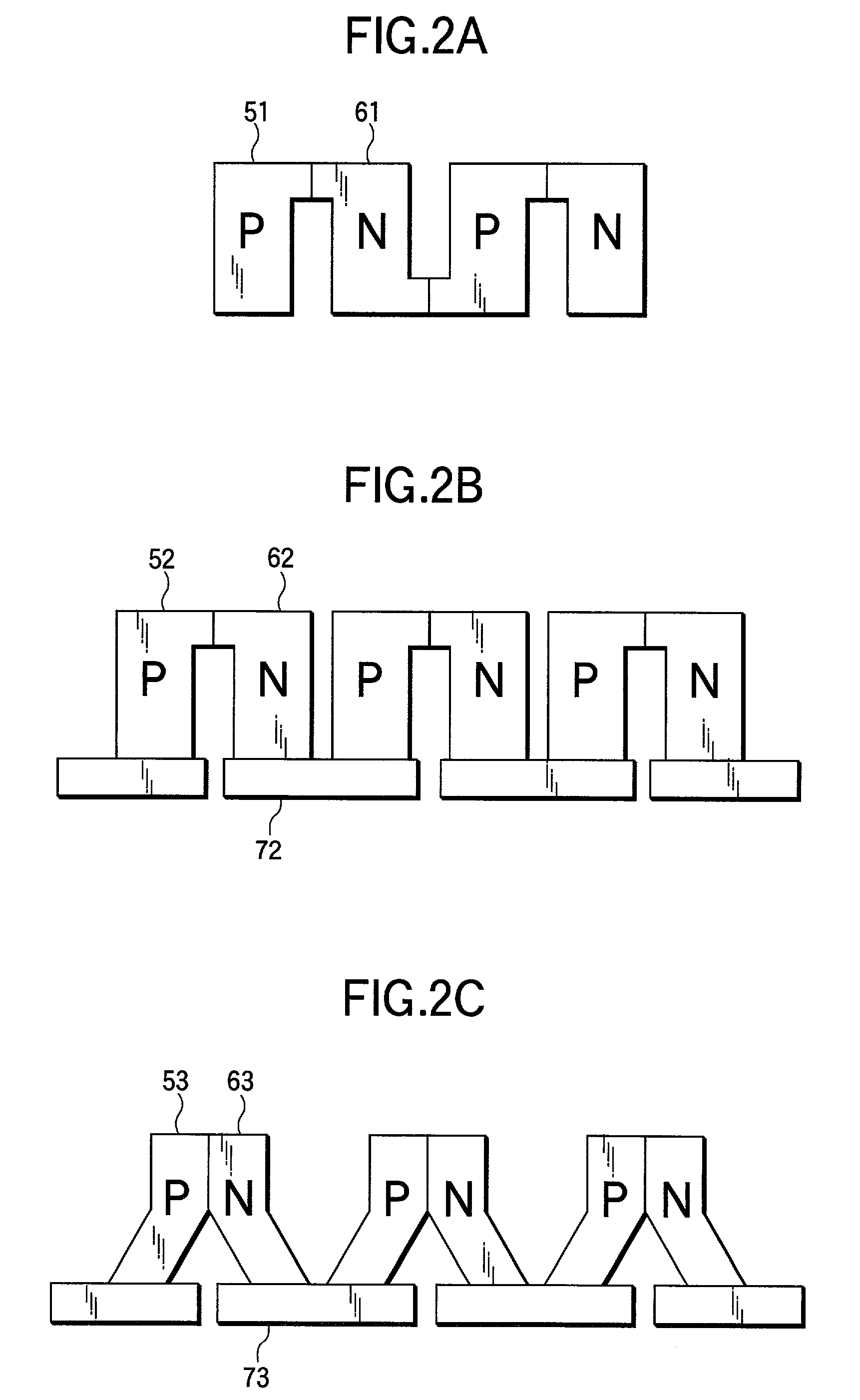Thermoelectric module
a technology of thermoelectric modules and modules, applied in the field of thermoelectric modules, can solve the problems of low usable temperature, low performance index, and fragile zn.sub.4sb.sub.4 used so far
- Summary
- Abstract
- Description
- Claims
- Application Information
AI Technical Summary
Benefits of technology
Problems solved by technology
Method used
Image
Examples
first embodiment
[0032] FIG. 1 illustrates a thermoelectric module according to this invention.
[0033] A thermoelectric module 1 comprises, for example, two ceramic substrates 30 and 40 as heat exchange substrates. A P-type element (P-type semiconductor) 50 and an N-type element (N-type semiconductor) 60 are connected intervention metallic component, for example, an electrode 70 between the two ceramic substrates 30 and 40, to form PN element pair. The metal member includes electrodes made of copper or nickel, a stress relaxation layer, a joining layer or a diffusion layer. For joining the thermoelectric element and the metal member, soldering may be used in a case of a thermoelectric module for low temperature using copper as the metal member but they should be joined, in other cases than described above, by brazing, thermal spraying, solid-state welding (sintering), vapor deposition or mechanical clamping.
[0034] Lead wires 80 are connected to the N-type element at one end of the PN element pair and...
second embodiment
[0076] Then, a second embodiment according to this invention is to be described. In this embodiment, each of N-type and P-type thermoelectric elements is formed as a segment type of a multi-layered structure.
[0077] FIG. 10 shows a thermoelectric module related to this embodiment. FIG. 10 shows an example in which each of N-type and P-type thermoelectric elements has a two layered structure. CoSb.sub.3 with addition of an N-type dopant is used for an N-type thermoelectric element 65 on the high temperature side, and an N-type Bi--Te series compound is used as an N-type thermoelectric element 66 on the low temperature side. On the other hand, an Mn--Si series compound with addition of a P-type dopant is used as a P-type thermoelectric element 55 on the high temperature side and a P-type Bi--Te series compound is used as a P-type thermoelectric element 56 on the low temperature side. When the thermoelectric element on the high temperature side and the thermoelectric element on the low ...
third embodiment
[0080] Then, a third embodiment according to this invention is to be explained. In this embodiment, the unit for the thermoelectric module has a multi-layered structure and is formed into a cascade type.
[0081] FIG. 12 shows a thermoelectric module according to this embodiment. FIG. 12 shows an example in which the unit of the thermoelectric module is constituted as a two layered structure. In the module unit on the high temperature side, CoSb.sub.3 with addition of an N-type dopant is used as an N-type thermoelectric element 67 and an Mn--Si series compound with addition of a P-type dopant is used as a P-type thermoelectric element 57. On the other hand, in the module unit on the low temperature side, an N-type Bi--Te series compound is used as an N-type thermoelectric element 68 and a P-type Bi--Te series compound is used as a P-type thermoelectric element 58. Different materials are used between the high temperature side and the low temperature side because of the same reason as t...
PUM
| Property | Measurement | Unit |
|---|---|---|
| temperature | aaaaa | aaaaa |
| thickness | aaaaa | aaaaa |
| thickness | aaaaa | aaaaa |
Abstract
Description
Claims
Application Information
 Login to View More
Login to View More - R&D
- Intellectual Property
- Life Sciences
- Materials
- Tech Scout
- Unparalleled Data Quality
- Higher Quality Content
- 60% Fewer Hallucinations
Browse by: Latest US Patents, China's latest patents, Technical Efficacy Thesaurus, Application Domain, Technology Topic, Popular Technical Reports.
© 2025 PatSnap. All rights reserved.Legal|Privacy policy|Modern Slavery Act Transparency Statement|Sitemap|About US| Contact US: help@patsnap.com



